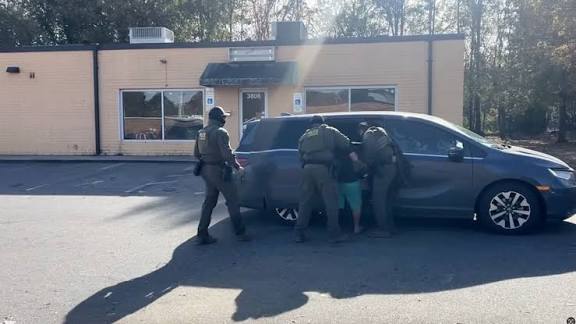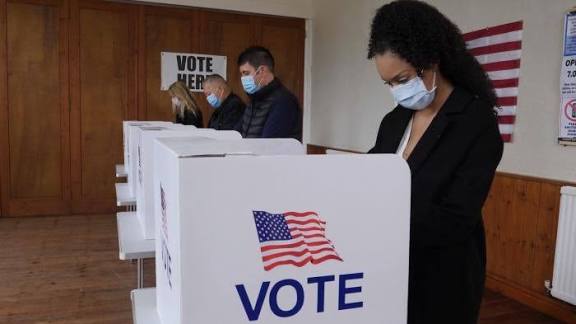Ice in charlotte news: Federal immigration,enforcement operations,live helicopter

ICE offers competitive salary benefits such as health insurance and retirement plans. Today we will discuss about Ice in charlotte news: Federal immigration,enforcement operations,live helicopter
Ice in charlotte news: Federal immigration,enforcement operations,live helicopter
In mid-November 2025, Charlotte, North Carolina — a city known for its economic growth, cultural diversity, and rapidly expanding immigrant population — found itself at the center of a dramatic and controversial federal immigration enforcement surge. Over a period of several days, agents from U.S. Customs and Border Protection (CBP), Immigration and Customs Enforcement (ICE), and other federal agencies were deployed across the city. Their presence triggered immediate concern among residents, community leaders, educators, and legal advocates.
As reports of arrests, detentions, and federal officers in unmarked vehicles circulated throughout neighborhoods, tensions climbed. Families stayed home from work, children feared going to school, and local leaders criticized the federal government for sowing fear and uncertainty. The political implications have also been significant, with a widening divide between federal authorities and local officials who claim they were not adequately consulted.
This comprehensive article explores what has unfolded in Charlotte: the factual events, the governmental decisions behind the operation, the community reactions, and the broader implications for immigration policy across the United States.
A Sudden Deployment: How the ICE Surge Began

Residents first noticed a heightened federal presence around November 15, 2025. Unmarked vehicles, plain-clothes officers wearing tactical gear, and coordinated sweeps across several neighborhoods sparked immediate alarm. Federal officials later confirmed that a multi-agency operation was underway to locate and detain individuals they described as “public safety threats.”
Critically, the deployment came with little public warning. Many Charlotte residents reported learning about the operation only after witnessing agents conducting stops or after hearing from neighbors and local organizations.
The sudden announcement followed months of increasing concern within the immigrant community. For much of the year, local immigrant-rights advocates had documented what they described as “random” or “indiscriminate” detentions. The surge, therefore, did not appear entirely out of nowhere, but its scale and visibility were unprecedented.
What Residents Reported Seeing on the Ground
Unmarked Vehicles and Vests
Witnesses across Charlotte described officers wearing bulletproof vests and badges on chains, approaching individuals in parking lots, at homes, and outside businesses. In some cases, officers reportedly did not verbally identify themselves, heightening confusion.
Detentions Near Homes and Business Corridors
Several businesses along Charlotte’s east side — an area known for its large immigrant population — closed early or limited hours as federal agents conducted operations nearby. Families remained indoors, afraid to go to work, the grocery store, or even step outside.
Church Grounds Encounter
One incident spread quickly through community networks: an individual was reportedly detained on church grounds while congregants were performing routine yard work. Faith leaders expressed concerns that houses of worship, historically considered sensitive locations, may no longer be respected as sanctuaries.
No Confirmation of Helicopters
Although social media posts suggested that helicopters were circling areas of the city, credible reporting has not confirmed helicopter involvement. In periods of high tension, such unverified claims can spread quickly. Local officials urged residents to verify information with trusted sources.
Impact on Schools and Children
Charlotte-Mecklenburg Schools (CMS) issued statements clarifying that ICE was not operating on or near school campuses. Nevertheless, fear spread among parents, many of whom chose to keep their children home.
Key concerns included:
Students encountering officers on their way to school
Possible detentions during drop-off or pick-up
Psychological distress among children from immigrant families
CMS reiterated that children have a constitutional right to public education, regardless of immigration status. District leaders urged families to send their children to school and assured them that CMS does not coordinate with federal immigration agencies.
The Community Hotline Surge: A Snapshot of Fear
Immigrant-advocacy groups in the region, especially the Carolina Migrant Network, reported an explosion of calls to their hotline. Normally receiving about two to four calls per week, the hotline recorded over 130 calls in just a few days.
Callers reported:
Relatives detained during routine traffic stops
Suspicious unmarked vehicles patrolling neighborhoods
Officers approaching individuals outside workplaces
Fears about school, grocery stores, or even walking dogs
Many callers said the enforcement seemed targeted mostly at men, raising questions about profiling practices.
Local Government Pushes Back
Several Charlotte leaders criticized the federal operation, arguing that the actions caused more harm than good.
City Officials
Mayor Vi Lyles and other city leaders issued statements pointing out:
The operation instilled “unnecessary fear”
Families were staying home from essential activities
The lack of communication from federal agencies created panic
Their sentiment was shared by county commissioners and school leaders, who called for clarity, compassion, and respect for civil rights.
Local Law Enforcement Distances Itself
Both the Mecklenburg County Sheriff’s Office and the Charlotte-Mecklenburg Police Department (CMPD) emphasized:
They were not participating in the federal operation.
They enforce local and state laws, not federal immigration laws.
Their goal is to build trust within communities, not undermine it.
This divide highlights a broader national debate about the role — or non-role — local police should play in immigration enforcement.
Legal and Rights-Based Concerns
Civil rights advocates raised alarms about potential violations stemming from the surge.
Due Process Issues
Reports described:
People detained without clear explanation
Officers failing to verbally identify themselves
Individuals unsure of where detained family members were taken
Lack of transparency can lead to constitutional challenges, especially if detentions are arbitrary or discriminatory.
Possible Racial Profiling
Advocates argue that the randomness and the gendered nature of many detentions suggest profiling. This concern is amplified when agents:
Operate in plain clothes
Use unmarked vehicles
Blend routine police stops with immigration checks
Sensitive Locations at Risk
Schools, churches, and medical facilities have historically been considered sensitive locations where ICE limits enforcement. Reports of activity near such places — even without explicit violations — raise alarm about changing enforcement boundaries.
Human Impact: Stories Behind the Headlines
Behind every detention is a family story. The Charlotte surge has deeply shaken communities already navigating fear, uncertainty, and complex legal circumstances.
Family Separation Anxiety
Parents worry about being detained while their children are at school. Some have drafted emergency plans, designating guardians in case of sudden separation.
Workers Losing Livelihoods
With many immigrants — documented or undocumented — performing essential jobs, especially in construction, hospitality, and service industries, fear-based absenteeism can have economic spillover effects.
Students Under Stress
Teachers report that:
Children are distracted
Some cry in class
Others express fear that parents won’t be home when they return
The psychological toll is considerable and may have long-term effects.
Political Context: Why Charlotte, and Why Now?
The Charlotte surge is not an isolated event. It follows a pattern of immigration enforcement actions concentrated in large, diverse, and often Democratic-led cities.
Factors shaping the timing and location:
Federal Strategy
The federal government has signaled a shift toward more visible, assertive enforcement efforts nationwide. Deploying agents to interior cities — far from the border — is part of a broader approach to demonstrate “nationwide immigration control.”
North Carolina’s Legal Landscape
North Carolina does not permit cities to designate themselves as “sanctuary cities.” This limits how much local governments can resist or restrict cooperation with federal immigration agencies.
Charlotte’s Demographics
As home to a large Latin American, Asian, and African immigrant population, Charlotte becomes a strategic location for federal operations. Its international communities are concentrated in particular neighborhoods, making enforcement easier for federal agents to execute.
Community and Nonprofit Response
Local organizations have mobilized swiftly to counter the effects of the surge.
Legal Support
Lawyers began providing:
Emergency legal intake
Rights education
Support for families unsure of where detained relatives were taken
Know-Your-Rights Workshops
Residents are being trained to:
Ask officers for identification
Record interactions
Avoid opening doors without a warrant
Exercise their right to remain silent
Mutual Aid Efforts
Community members have organized:
Ride-sharing to avoid unnecessary walking or biking
Food drop-offs for families afraid to go shopping
Volunteer interpreters for non-English-speaking residents
These efforts have strengthened community bonds in the face of fear.
Media Coverage and Public Perception
Local news stations, national outlets, and grassroots social media accounts have covered the Charlotte situation from various angles. Some highlight public safety concerns, while others emphasize civil rights violations.
Misinformation Risks
Heightened fear creates fertile ground for misinformation:
False sightings
Claims of helicopters
Rumors of school raids
Exaggerated numbers of detentions
Local leaders continually urge residents to verify information with reliable sources rather than relying solely on social media.
Long-Term Implications for Charlotte and the Nation
The federal surge in Charlotte carries lasting consequences.
For Immigrant Families
Increased distrust of government institutions
Reluctance to report crimes
Fear of accessing healthcare, schools, or public services
For Local Government
Strained relationship with federal authorities
Increased pressure to protect vulnerable residents
Need for stronger communication strategies
For National Immigration Policy
Charlotte’s case may become a reference point for:
Federal–local tensions
Constitutional litigation
Public debates over immigration enforcement practices
If these operations continue nationwide, the Charlotte surge may be looked back on as an early example of aggressive interior enforcement in the mid-2020s.
Conclusion
The ICE and CBP surge in Charlotte has exposed deep rifts in American immigration policy, shining a spotlight on the tensions between federal and local authorities, between enforcement and community trust, and between national security and civil rights. While federal officials justify the operation as necessary for removing threats, local leaders and residents argue that the tactics create chaos, fear, and long-term harm.
Charlotte now stands at a crossroads. How the city responds — legally, politically, and socially — will likely influence the national conversation on immigration for years to come. Amid uncertainty, one truth remains clear: this is not merely a story of policy and politics, but of families, children, and communities trying to navigate an increasingly complex landscape.
How useful was this post?
Click on a star to rate it!
Average rating 0 / 5. Vote count: 0
No votes so far! Be the first to rate this post.
About the Author
usa5911.com
Administrator
Hi, I’m Gurdeep Singh, a professional content writer from India with over 3 years of experience in the field. I specialize in covering U.S. politics, delivering timely and engaging content tailored specifically for an American audience. Along with my dedicated team, we track and report on all the latest political trends, news, and in-depth analysis shaping the United States today. Our goal is to provide clear, factual, and compelling content that keeps readers informed and engaged with the ever-changing political landscape.




